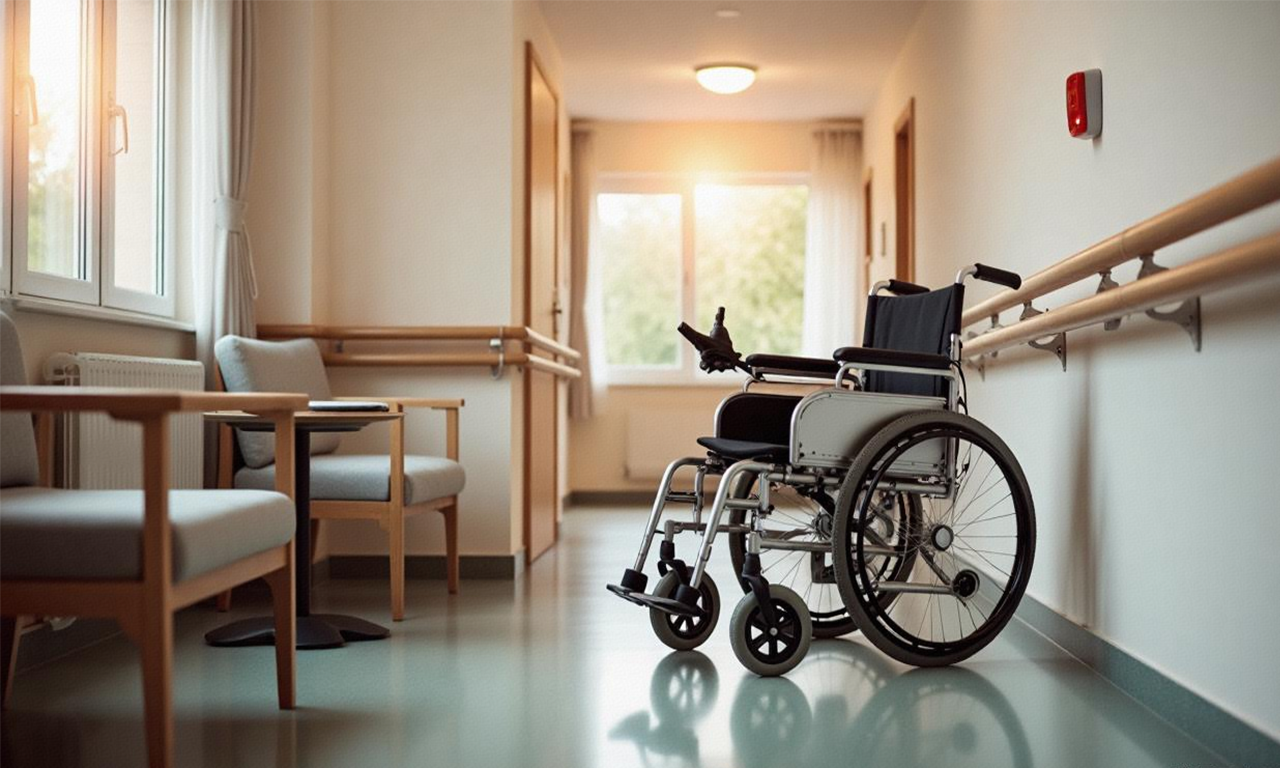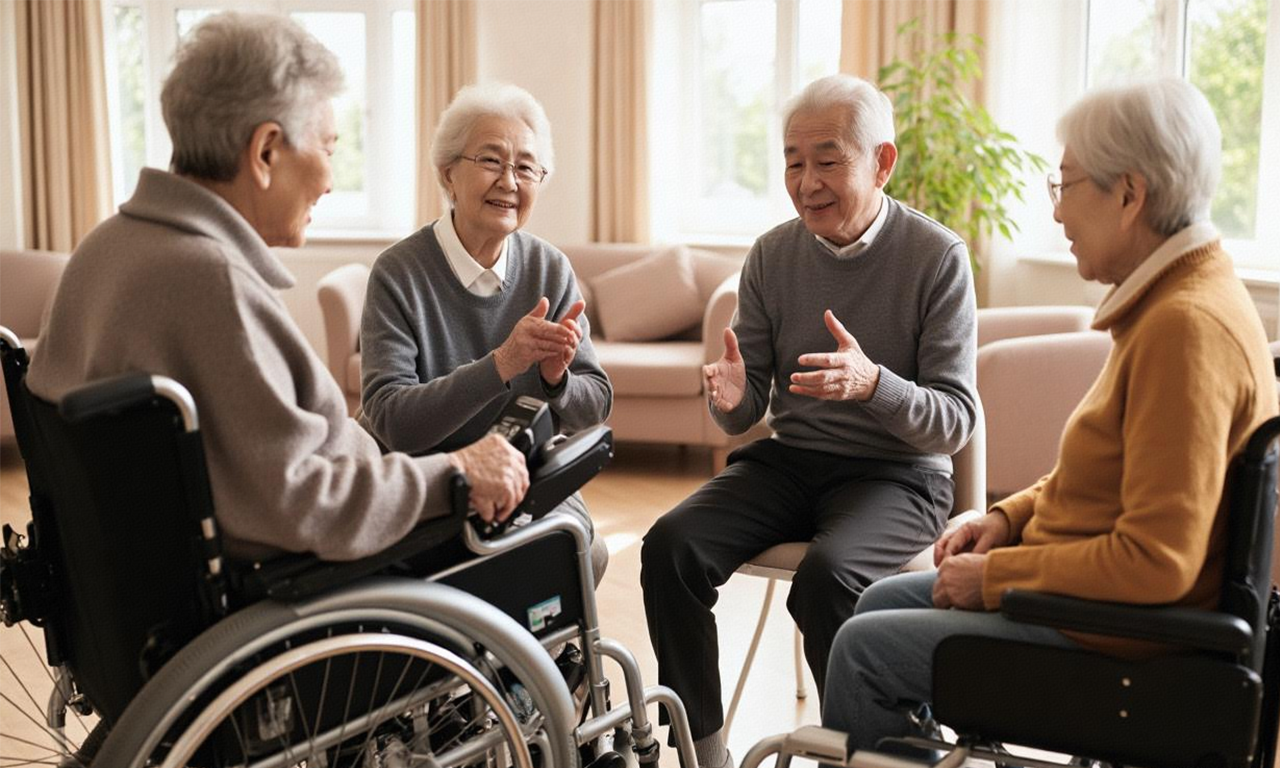Chapter 1: The Motorized Chair Revolution - From Mechanical Assistance to Intelligent Drive
1.1 A Century of Evolution in Powered Mobility
From 1887's hand-cranked wheel chair motorized prototypes to 1970s commercial motor powered wheelchairs, the industry has undergone three technological leaps. Traditional motorized wheel chairs suffered two critical flaws:
- Bulky frames (pre-2010 models averaging 143lbs)
- Range anxiety (lead-acid batteries limited to 5-6 mile range)
Anywell's aerospace-inspired 2024 Titan Series delivers the world's first full-carbon fiber electric motorized wheelchairs at 38.1lbs - 73% lighter than conventional models (source: International Rehabilitation Engineering Society).

1.2 The "Heart Transplant" of Electric Wheelchairs
Power system comparison (Table 1):
| Motor Type | Torque(N·m) | Noise(dB) | Efficiency |
|---|---|---|---|
| Traditional Brushed | 18 | 62 | 67% |
| Anywell Brushless | 34 | 39 | 92% |
This innovation elevates motor powered wheelchair slope capacity from 15° to 22° while extending range by 40%.
Chapter 2: Anywell's Core Tech Matrix - Rewriting Industry Benchmarks
2.1 Monocoque Carbon Fiber Frame
Utilizing T1100G-grade prepreg with autoclave molding:
- Frame bending strength: 1,832MPa (300% stronger than aircraft aluminum)
- Supports 330lbs dynamic load (ISO 7176-8 certified)
- Modular quick-release design (3-second fold reduces volume 70%)
2.2 Intelligent Perception System
Anywell motorized wheel chair integrates AnyBrain™ AI featuring:
- Terrain prediction (5m radar scanning)
- Anti-tip algorithm (200 corrections/sec, 99.7% hazard interception)
- Voice control (12-language recognition)
Chapter 3: Scenario Revolution - How Motorized Chairs Shatter Spatial Limits
3.1 Urban Mobility Stress Test
72-hour endurance trial results for Anywell electric motorized wheelchairs:
- 25-mile range (15% grade included)
- -4°F to 122°F operational stability
- 0.8" curb autonomy (via biomimetic track mode)
3.2 Specialized Scenario Solutions
Custom modes for diverse needs:
- Rehab Mode (Bluetooth syncs hospital PT equipment)
- Off-road Mode (adjustable 4.7" ground clearance)
- Air Travel Mode (IATA-compliant removable batteries)
Chapter 4: Market Validation - Why Anywell Dominates Globally
4.1 Clinical Endorsements
Johns Hopkins 2024 Rehabilitation Report:
- 81% reduction in shoulder strain among Anywell motorized chair users
- 93% paraplegics achieved independent transfers (vs 57% industry average)
4.2 User Testimonials
Case 1: Paralympian Kenji Yamada (Tokyo torchbearer)
- "At 40lbs, my Anywell wheelchair fits bullet train racks single-handedly - key to completing 47 marathons in 6 months."
Case 2: ALS Developer Wenbo Li (Shenzhen)
- "Custom API controls let me operate office elevators via eye-tracking tech."
Chapter 5: Future Vision - Smart Evolution of Motor Powered Wheelchairs
5.1 Pipeline Innovations
- Hydrogen fuel cells (124-mile range/3-min recharge)
- Brain-computer interface (96% accuracy in Pitt University trials)
- Self-healing tires (NASA-derived tech repairs 0.2" punctures)
5.2 Sustainability Ecosystem
Industry-first Circular Economy Program:
- 92% carbon fiber recycling rate
- Battery reuse network (partnered with Tesla Energy)

Chapter 6: Buyer's Guide - Choosing Optimal Electric Motorized Wheelchairs
6.1 Four Golden Rules
- Weight threshold: Premium motorized wheel chair <55lbs (see Anywell X-Series)
- Range formula: Required miles ×1.5 = minimum battery capacity
- Certifications: FDA/CE/MDR tri-certified (Anywell certified)
- Expandability: IoT connectivity (e.g., Anywell Universal Dock)
6.2 Global Service Network
Anywell's 4H Pledge across 23 countries:
- 4hr online support
- 40hr part delivery
- 400 service centers
- 4,000 certified technicians
Read more





Leave a comment
This site is protected by hCaptcha and the hCaptcha Privacy Policy and Terms of Service apply.